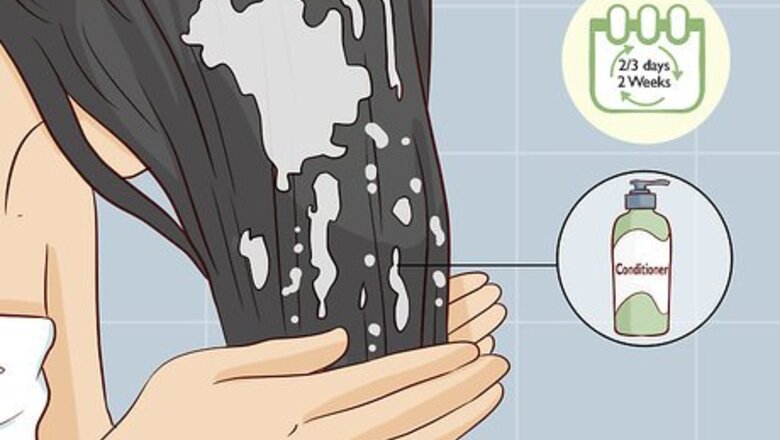
views
- Divide your dry hair into 4 sections with elastics or clips. Mix the developer and bleach powder in a small plastic bowl.
- Apply bleach to each section of your hair, starting with the ends first. Wait 30-40 minutes and rinse it out.
- Repeat the bleaching process in 2-4 weeks to remove brassiness and achieve a bright blonde hue.
- Maintain your blonde hair by using purple shampoo and limiting your use of heat styling tools.
Prepping Your Hair
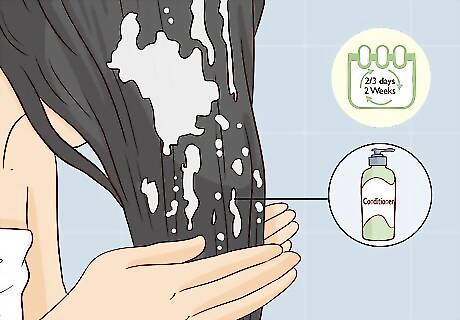
Deep condition your hair every 2-3 days for 2 weeks before bleaching it. This isn’t required, but it’s helpful if you have the patience for it. Going from black to blonde hair is going to require several bleaching sessions, and bleach easily dries-out and damages your hair. Get it to the healthiest state beforehand to make the result look that much better. Similarly, stop using heat-styling tools for a few weeks before bleaching to limit damaging heat exposure.How to Do an At-Home Hair Mask: Mix 2 tablespoons (30 mL) of coconut oil, 1 tablespoon (15 mL) of olive oil, and 2 to 4 tablespoons (30 to 59 mL) of honey in a small bowl. Comb the mixture through dry or slightly damp hair. Wrap your hair in a towel or shower cap and let the mask saturate your locks for 15-30 minutes. Rinse the mask out in the shower sans shampoo, condition your hair, and let it air dry.
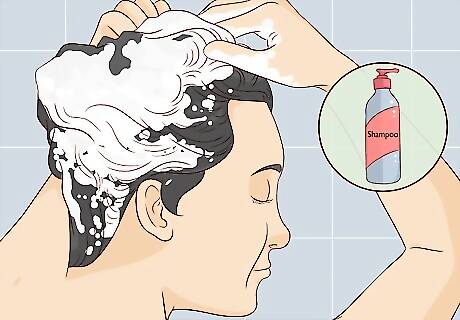
Strip away existing dye and color with a clarifying shampoo. Please note that if your hair hasn’t been color-treated, you can skip this step. Clarifying shampoo won’t completely remove the color from your hair, but it can lighten it enough to make it easier to bleach. Use the shampoo for 2-3 washes before you plan on bleaching your hair. Avoid using clarifying shampoo the same day you apply your first bleach treatment. It could cause your hair to get excessively dry.
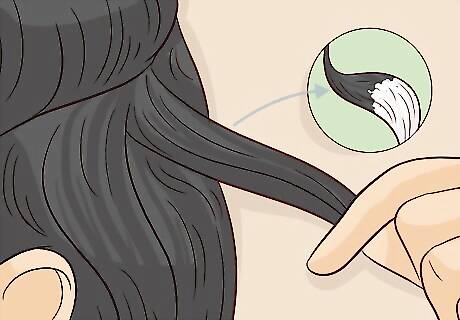
Do a strand test to see how the bleach takes to your hair. This test will help you determine how long you should leave the bleach on your hair for. It could also tell you if your scalp is too sensitive for the bleaching process. Use a small section of hair that is at least 1 inch (2.5 cm) wide and that can be easily hidden underneath the rest of your hair. Clip the rest of your hair back so that it doesn’t accidentally come into contact with the bleach. Wear gloves and follow the directions to mix the bleach powder and developer. Leave the bleach on your hair for 30-45 minutes before rinsing it out. If your scalp gets red or irritated, that could indicate you have an allergy or sensitivity to the chemicals. If this happens, don’t proceed with bleaching your entire head. Visit a professional colorist to see what your next steps should be instead.
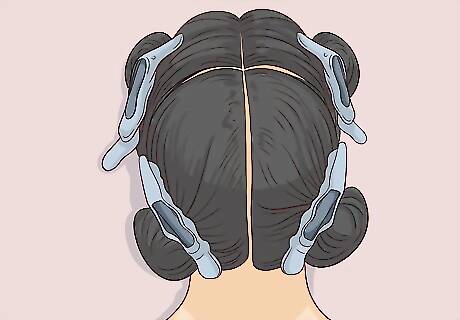
Divide your hair into 4 sections with elastics or clips. Once you’re ready to start your first bleaching session, separate your hair into 4 quadrants: part your hair down the middle, then split each side into 2 sections, one high and one low. Use hair elastics or clips to keep each section separate. If you have a lot of hair, you may want to separate it into even more sections so that it’s easier to work with.

Protect your skin and clothes by wearing gloves and an old T-shirt. Bleach is a harsh chemical and can burn your skin, so you should limit how much of your skin comes into contact with it. Wear a pair of rubber gloves when mixing and applying the bleach powder and developer. Change your clothes and wear something you aren’t super attached to—if you drop bleach on your shirt, it’ll stain it. You may also want to lay down some old towels to protect the space you’re working in. If bleach gets on the furniture, it can cause irreparable stains.
Bleaching: Round One
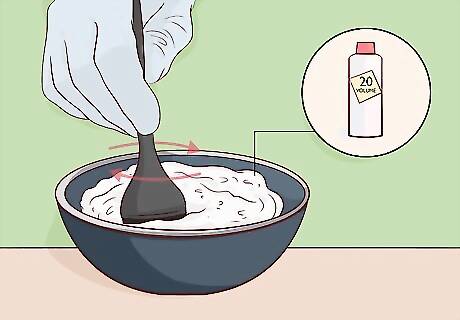
Mix the developer and powder in a small plastic bowl. When it comes to going from black to blonde hair, it’s best to not skimp on the product you buy—visit a salon or cosmetics store rather than a grocery store to buy your supplies. Check out the following breakdown for information on which volume of developer you should buy: A 20-volume developer will lift your hair 1-2 shades; this would be a good option if you’re working with hair that has been previously colored and is damaged or dry. A 30-volume developer will lift your hair 2-3 shades; this is a great option if your hair is in its natural state. A 40-volume developer will lift your hair about 4 shades, but it can be very damaging; if your scalp is sensitive, avoid using this high of a developer as it could cause major irritation. You may need to use a higher volume developer to make up for the underlying pigments in your dark hair. Because your hair is so dark, using bleach is the best option for lightening your hair. Other methods, like using peroxide or sun-in spray, will give your hair a coppery tone and will probably never give you the shade you actually want.Warning: Never use commercial bleach meant for cleaning and disinfecting on your hair. It is too powerful and will likely burn your skin and completely ruin your hair. Always use a cosmetic-grade bleach powder.
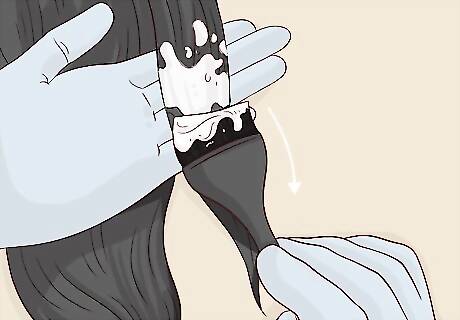
Apply the bleach to each section of your hair, starting with the ends first. Start with a bottom section and undo it from its elastic or clip. Take a 1 inch (2.5 cm) piece of hair and use the applicator brush to spread the bleach from the tips to about 1 inch (2.5 cm) from your scalp, leaving the roots untouched. Repeat this until the entire section is covered, then undo the next quadrant and do the same thing until your entire head (sans roots) is done. The heat from your scalp can make the bleach act faster, which sometimes results in what is called “hot roots,” meaning that your roots are significantly lighter than the rest of your hair.
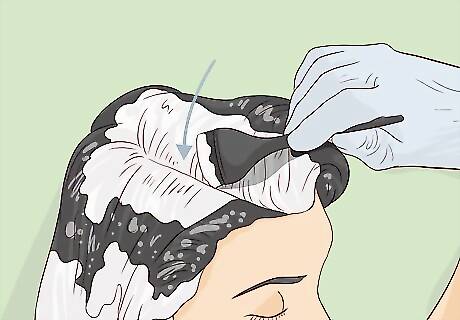
Go back and apply bleach to the roots of your hair. After you’ve bleached the lengths of your hair, it’s time to go back and tackle the roots. Start at the back of your head and work your way forward in sections, applying the bleach just to the 1 inch (2.5 cm) you left untouched previously. Feel free to secure each quadrant of hair in an elastic or clip as you finish to help yourself stay organized. If at any point the bleach starts burning your scalp, rinse it out immediately.
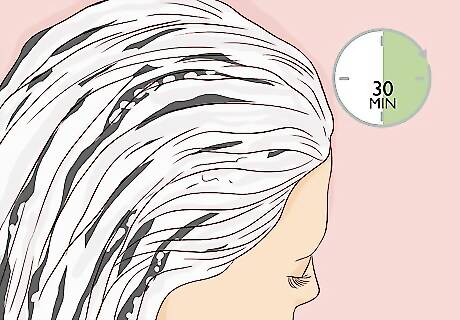
Leave the bleach on your hair for 30-40 minutes. Your strand test should have given you a good idea of how much time your hair needs to start taking on the bleach. Feel free to cover your hair with a shower cap during this stage so that you don’t accidentally get bleach on furniture or anything else. Don’t leave the bleach in your hair for more than 45 minutes. Keep in mind that this is just the first bleaching session in your process. You’ll need to do at least one more to get your hair to the right shade of blonde, so don’t get upset if the color isn’t looking perfect just yet.

Rinse out the bleach, shampoo and condition your hair, and let it air dry. After the 30-40 minutes have passed, use lukewarm water to thoroughly rinse the bleach out of your hair. Use a bleach-specific moisturizing shampoo and conditioner, which is often included in the bleaching packet you purchased. Let your hair air dry rather than using a blowdryer—remember, your hair just went through a lot so it’s important to limit heat-styling products right now. Don’t be surprised if your hair looks a little orange or coppery. The first bleach is enough to lighten your hair 2-3 shades, but it most likely won’t be blonde yet.
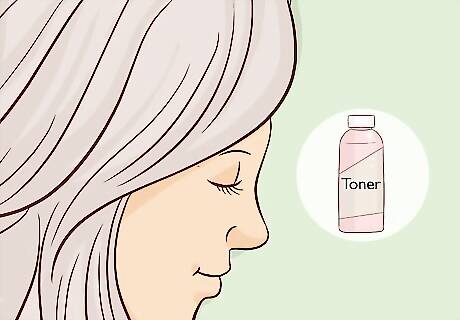
Use toner on your hair after 1-2 days to help neutralize brassy tones. You’re going to be walking around for a few weeks with your hair in an in-between state, so using toner at this stage will help you feel less self-conscious about any potential orange or brassy shades. Opt for a silver, pearl, or light ash toner to help cool down your hair. If you don’t want to apply toner at this stage, at least switch to using purple shampoo, which will also help get rid of brassy tones and make your hair color look ashier.
Bleaching: Round Two
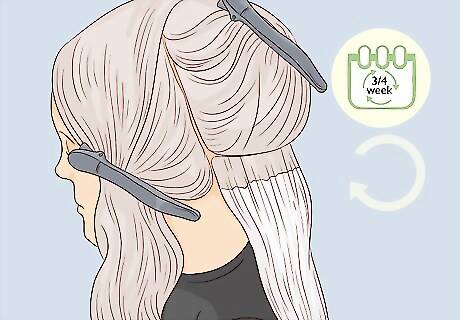
Wait 2-4 weeks before repeating the bleaching process. This is the most important step in keeping your hair as healthy as possible during your black-to-blonde transition. If your hair is brittle and dry, put off the second bleaching session for 3-4 weeks; if it seems to be responding well to conditioning treatments, wait 1-2 weeks. If after the second bleaching session your hair still isn’t as light as you want, wait another 1-2 weeks and then do a third session. Or, you may want to visit a professional colorist at that stage to get some help before doing any more damage to your hair. Don’t do more than 3 bleaching sessions maximum. It will be extremely hard for your hair to come back from that much exposure to a harsh chemical.
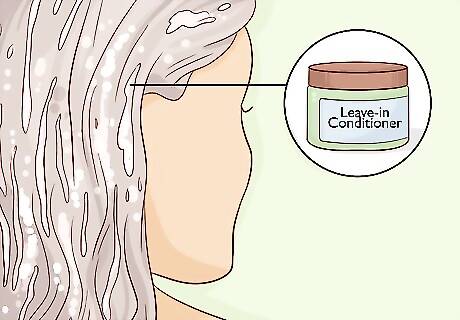
Use a deep conditioner or leave-in conditioner every other day for 2-4 weeks. While you’re waiting between bleaching sessions, take some extra time to care for your hair. If you don’t want to buy a product at the store, applying coconut oil and letting it sit for 20-30 minutes can help rehydrate those bleached locks of hair. Similarly, limit how often you use heat styling tools during this time, as the excess heat will just damage your hair further.
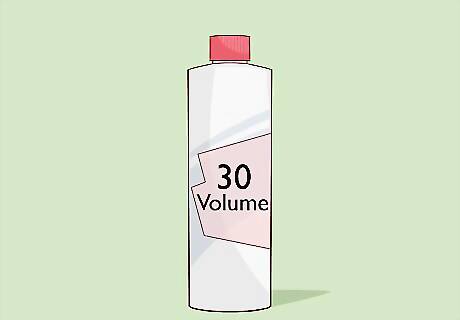
Opt for a 20- to 30-volume developer for your second bleaching session. Once it’s time to apply the next round of bleach, use either the same or a lesser-volume developer than you did before. The higher-volume a developer is, the more damage it will do to your hair. A 20-volume developer will lift your hair another 1-2 shades. With the right toner, it may be enough to get your hair to the bright blonde color you want. A 30-volume developer will lift your hair another 2-3 shades. This is a good choice if your hair isn’t horribly brittle and dry from the first round of bleach.
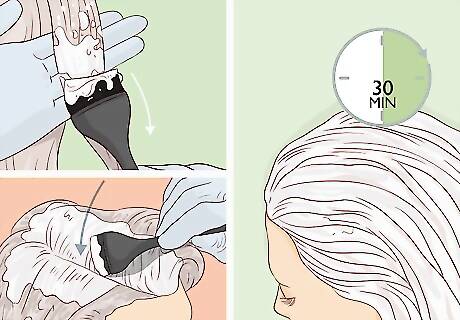
Repeat the same bleaching process as you did the first time. Section your hair into 4 quadrants. Apply the bleach to the tips and mid-sections of your hair first, and then go back and apply it to the roots. Let the bleach sit for 30-40 minutes. Remember to wear your rubber gloves and an old T-shirt while using the bleach.

Rinse out the bleach, then wash and condition your hair. After the time has passed, go ahead and get in the shower to rinse away all of the bleach. Use a deep conditioning shampoo and conditioner, and then let your hair air-dry. If you have to use a hairdryer, run it on the lowest heat setting possible.
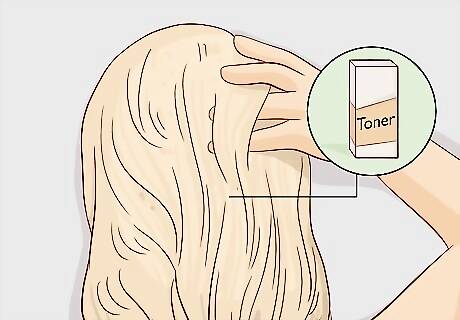
Apply toner to your hair to get a brighter blonde. Without toner, your blonde locks might look brassier than you’d like. Wait 1-2 days after you’ve finished the second bleaching session; otherwise, the toner could dry out your hair a little bit more. Use either an ammonia-based toner or a purple shampoo and follow the instructions on the package. You can use toner every few weeks to touch up your hair, but avoid using it every day. It can dry out your hair if used too frequently.
Maintaining Your Color
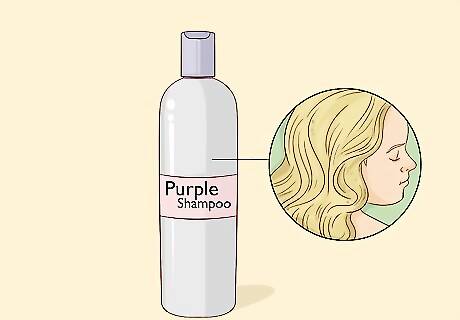
Use purple shampoos and conditioners made for blonde hair. When you go to the store, look for products that state they are for blonde hair. Shampoos and conditioners with a purple hue will help keep your hair from transitioning from bright blonde to straw yellow. For the best results, use a purple shampoo 1-2 times per week. If you wash your hair more than that, opt for a deep-moisturizing shampoo on the other days.
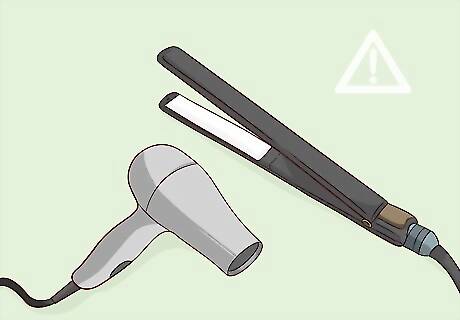
Limit how often you use heat-styling tools on your blonde locks. Hairdryers, straighteners, and curlers use high heat to style your hair, and that heat can damage your locks even more. If you do need to use these tools, operate them on the lowest heat setting possible to minimize damage. There are a few different ways you can either straighten or curl your hair without heat. Check them out and see if any will work for you.
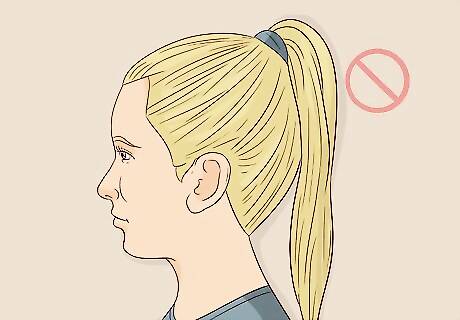
Avoid high ponytails and tight buns to prevent breakage in your hair. Bleached hair tends to be more brittle and breaks more easily than unbleached hair. Any style that requires a tight hair elastic poses a threat to your fragile hair strands and should be avoided when possible. There are some great anti-breakage products out there. Look for hair elastics made of fabric, satin, or ribbon or ones that resemble a spiral ring
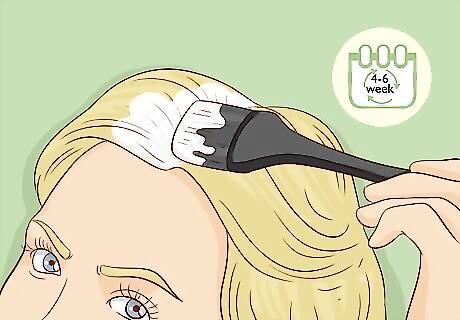
Touch up your roots every 4-6 weeks to maintain your look. The process to do your roots is very similar to the regular bleaching process, but you won’t need to apply the bleach to your entire head of hair. Section your hair like you normally would, but apply the bleach only to your roots. Let it sit for 30-40 minutes and then rinse it out. Don’t forget to apply toner to your hair 1-2 days after your touch up if that’s a part of your process. Otherwise, your roots will still be a different shade of blonde than the rest of your hair.Tip: It can be really difficult to get your roots the same shade as the rest of your hair. You may want to visit a professional colorist every once in a while to let them do this process for you.
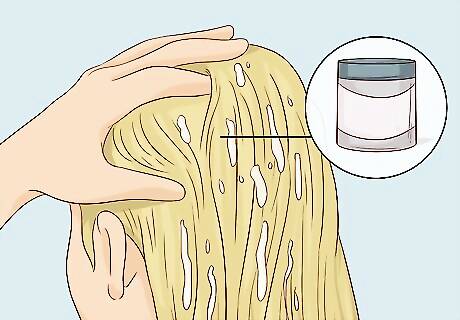
Do a hydrating mask once per week to keep your locks healthy. Just because the bleaching is done doesn’t mean your hair no longer needs that TLC. Look for a deep-conditioning mask or make one yourself at home. These products won’t hurt your hair at all, so feel free to use them more than once a week if you feel it would be beneficial to your hair.














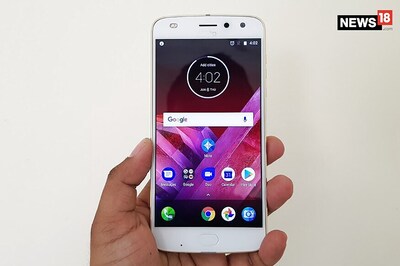
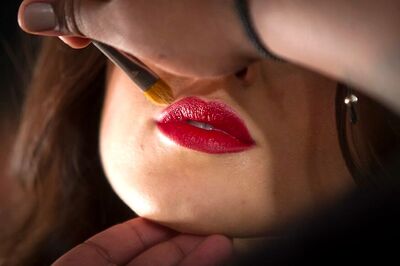

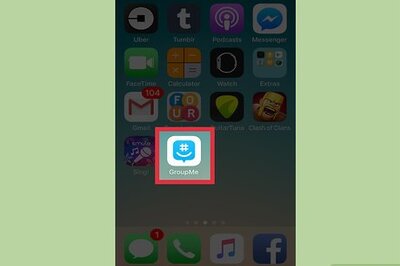

Comments
0 comment